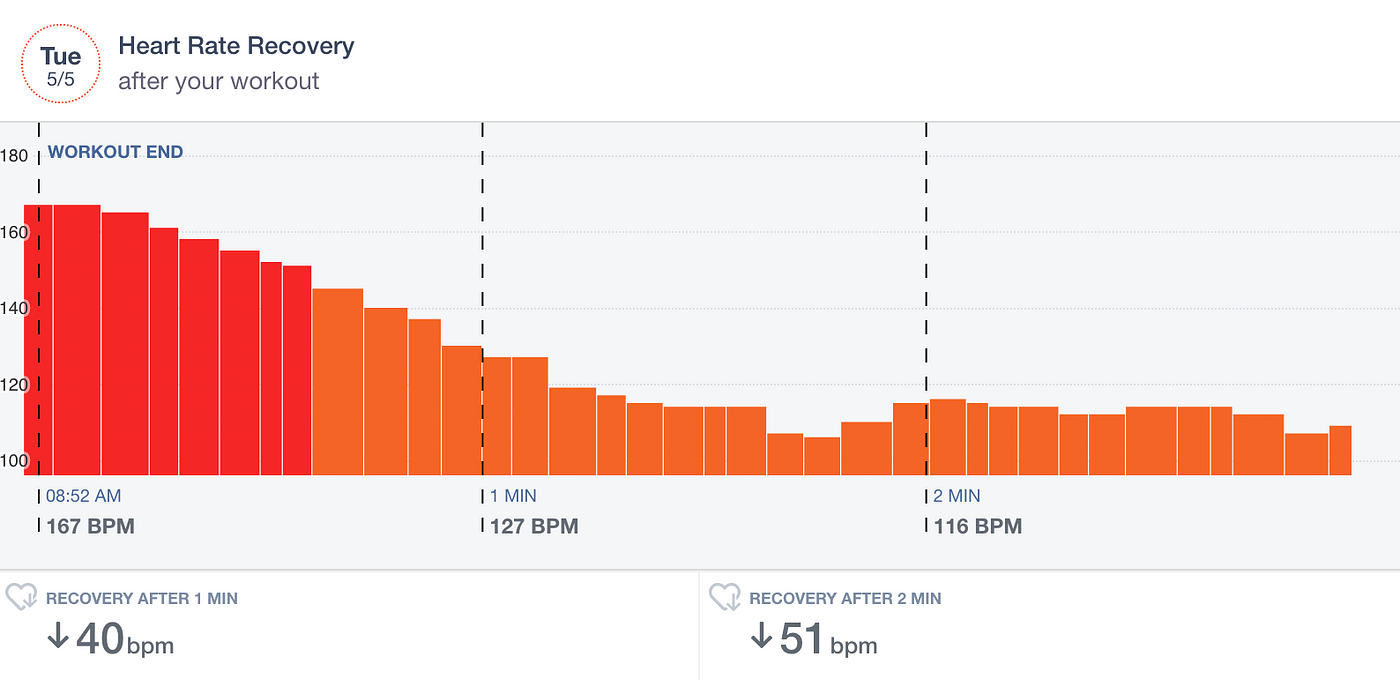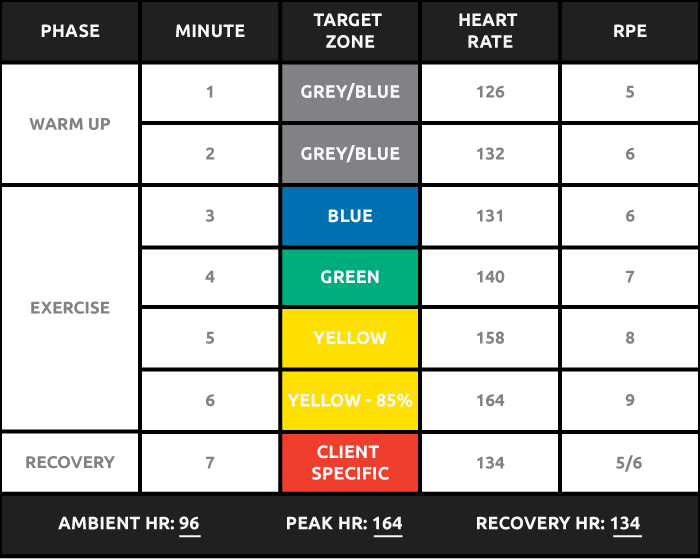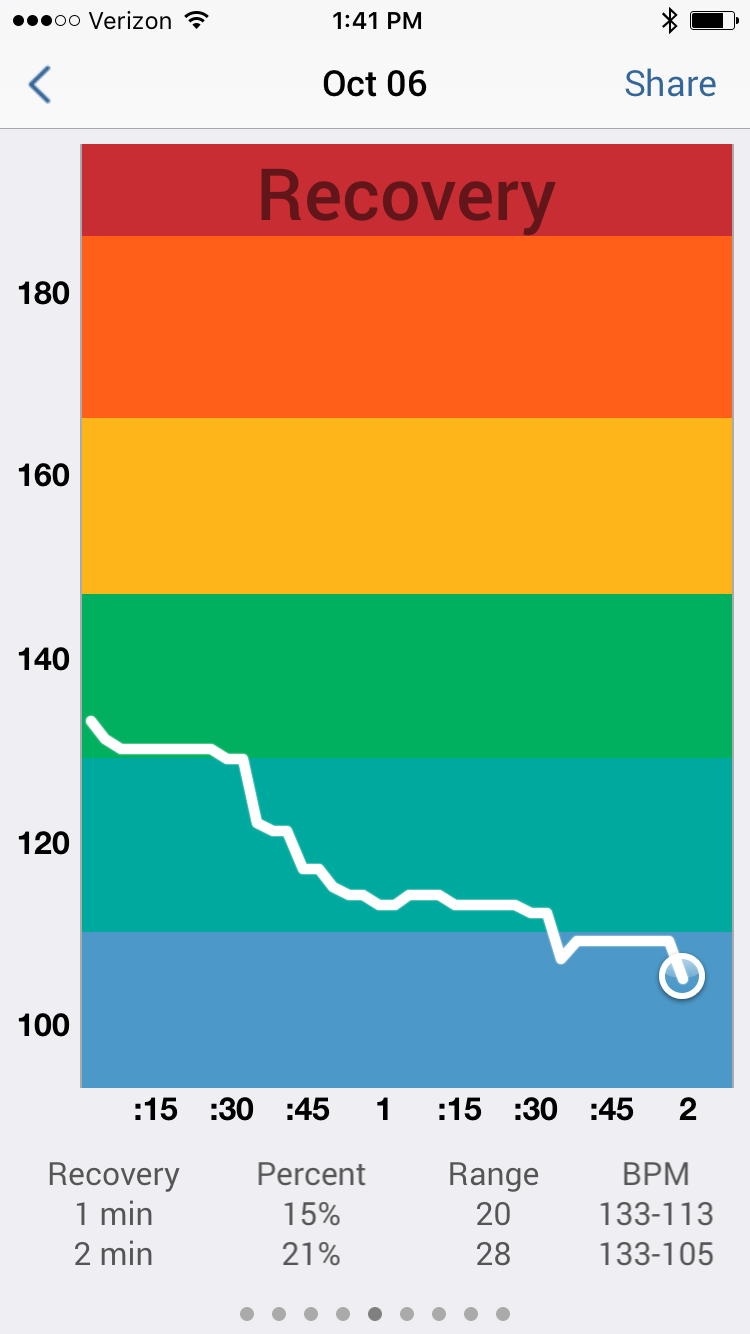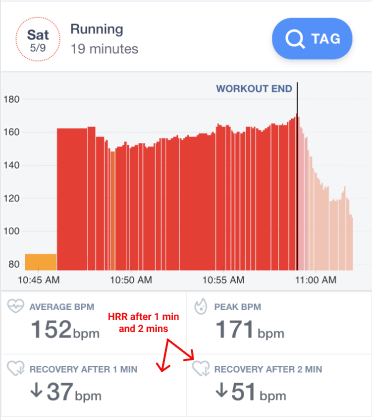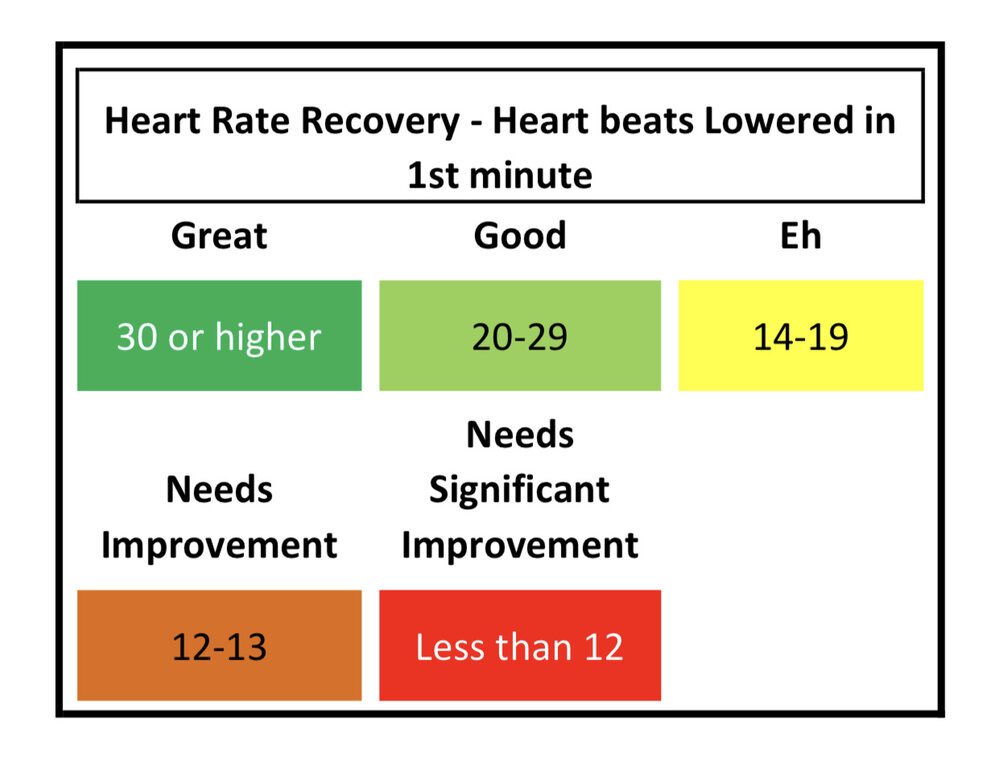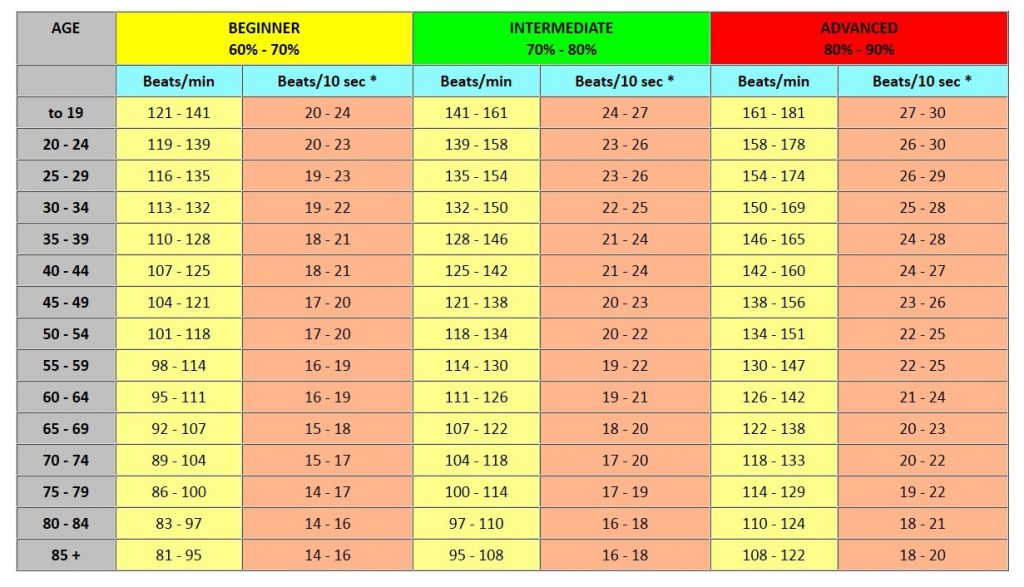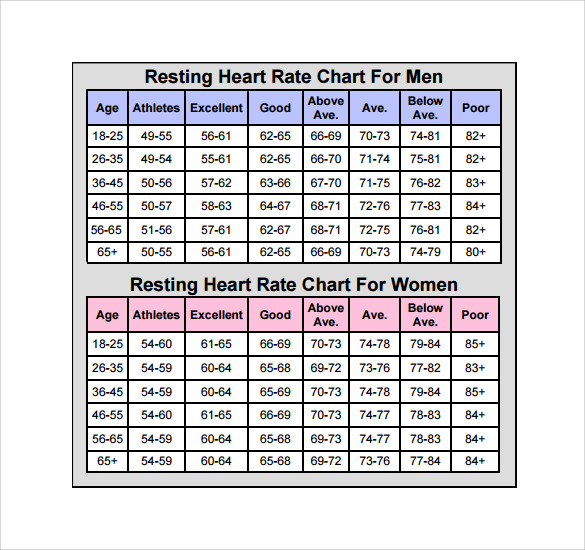Heart Rate Recovery Chart
Keep in mind that in order to reliably track your recovery over time you should be recreating the same test under the same conditions.
Heart rate recovery chart. In a study published in Cardiology Journal in 2011 heart rate recovery was defined as the difference between the peak heart rate during exercise and the heart rate one minute after exercise. We do not recommend that you strive to reach this maximum level initially it serves simply as a reference point. The faster your heart rate recovers or slows down the fitter and healthier your heart.
First take your pulse while youre relaxed. 10 rows Heart rate recovery is a great way to assess your fitness level. 120 - 160 for people 20 - 29 years of age.
Advertisement Two-Minute Mark The heart rate two minutes after exercise is often referred to as the recovery. Subtract your 2-minute heart rate from the heart rate you took immediately after exercising. For example an HRR-1 of 26bpm means that your heart rate decreased by 26bpm in the one minute after you stopped exercising.
To calculate your heart rate recovery time youll need. Heart rate recovery is normally measured at 1 2 or 3-minute intervals with 1-minute HRR being the one that is most commonly used. Calculating Your Recovery Heart Rate.
These recovery results were taken from Enhanced Medical Care. To calculate your heart rate recovery time youll need. Test your recovery and record these three numbers.
A watch or clock with a second hand or a simple stopwatch. Heart rate recovery and resting heart rate together just about capture all the information that is needed for determining CRF. Your heart rate 2 minutes later.
In chart 1 peak to final resting heart rate difference is 146 66 80 bpm In chart 2 peak to final resting heart rate difference is 138 62 74 bpm The results are consistent with a physiology of someone in their 20s. Your heart rate recovery. Two minutes after you stopped exercising your heart rate then decreased to 95.
Here is the heart rate formula. 115 - 155 for people 30 - 39 years of age. Your biological age.
Follow this with a heart rate reading and then rest for 2 complete minutes and take your heart rate again. What is a recovery heart rate. Heart rate recovery can be defined as the rate at which the HR declines from either maximal or submaximal exercise to resting levels and has been identified as a powerful and independent predictor of cardiovascular and all-cause mortality in healthy adults 7 8 9 in those with CVD 10 11 and diabetes 12.
This shows you your heart rate recovery following the completion of your exercise your HRR following one minute and two minutes following the completion. For example if your heart rate is 170 beats per minute when you finish working out and then it drops to 150 bpm a minute later your HRR is 20 bpm. The quicker your heart.
Your biological age is slightly older than your calendar age. A place to exercise. The importance of vagal tone can not be underestimated in patients with heart disease as low vagal tone or sympathetic nervous system activation is a major marker of stress and this stress has a major effect on the heart and.
First you will need to achieve targeted heart rate which can vary from a person to person depending on your age. On average the resting heart rate is between 60 and 100 beats per minute. The lowest normal value for the purposes of that study was 18.
Use the chart below to find the target heart rate for your age group. It has also been reported to be a remarkable complement to the. A recovery heart rate of 25 to 30 beats in one minute is a good score and 50 to 60 beats in one minute is considered excellent.
9 rows If the recovery heart rate difference is in between 2252 beats per minute. Hold onto them so you can compare the values you get over time. Your heart rate immediately after stopping.
You should monitor your one-minute and two-minute recovery heart rate at least twice weekly to gauge whether your fitness level is improving. Targeted heart rate zones. Select a completed workout by tapping on it.
Resting heart rate in chart 1 is around 70 bpm in chart 2 it is 65 bpm. 220 age maximal heart rate. Your heart will recover quicker as you become fitter.
Find Your Target Heart Rate. If the difference between the two numbers is. For example comparing your recovery after a bout of steady-state exercise to your recovery after.
You will now see the Heart Rate recovery. I took these exact numbers from the csv readings. Calculate Your Heart Rate Recovery.
HOW TO DETERMINE YOUR RECOVERY HEART RATE. This recovery heart rate measure helps to evaluate your overall heart. This is the heart rate your body will drop to after two minutes after stopping an exercise session.
A watch or clock with a second hand. The most commonly measured timeframes are 1 minute after peak exercise HRR-1 and 2 minutes after peak exercise HRR-2. Scroll left on the chart for Heart Rate.
Heart rate recovery is how much your heart rate drops after you stop exercising. Exercise to reach your target heart rate which is 60 to 80 percent of 220 minus your age. To calculate your heart rate recovery rate you now subtract the two numbers.
